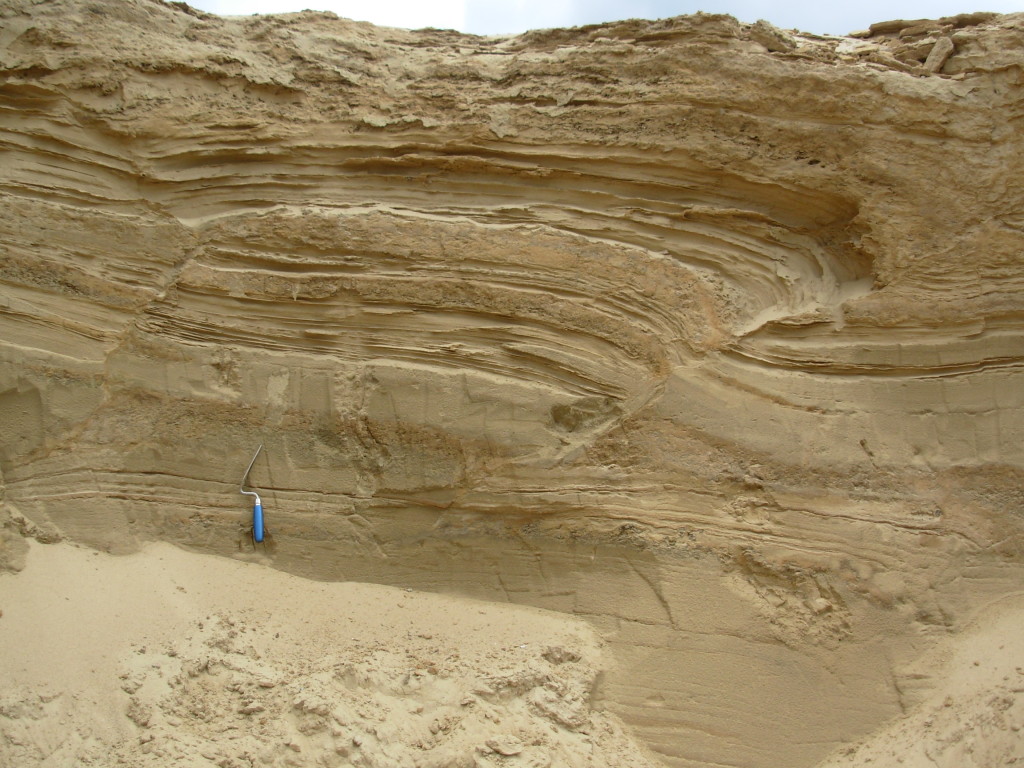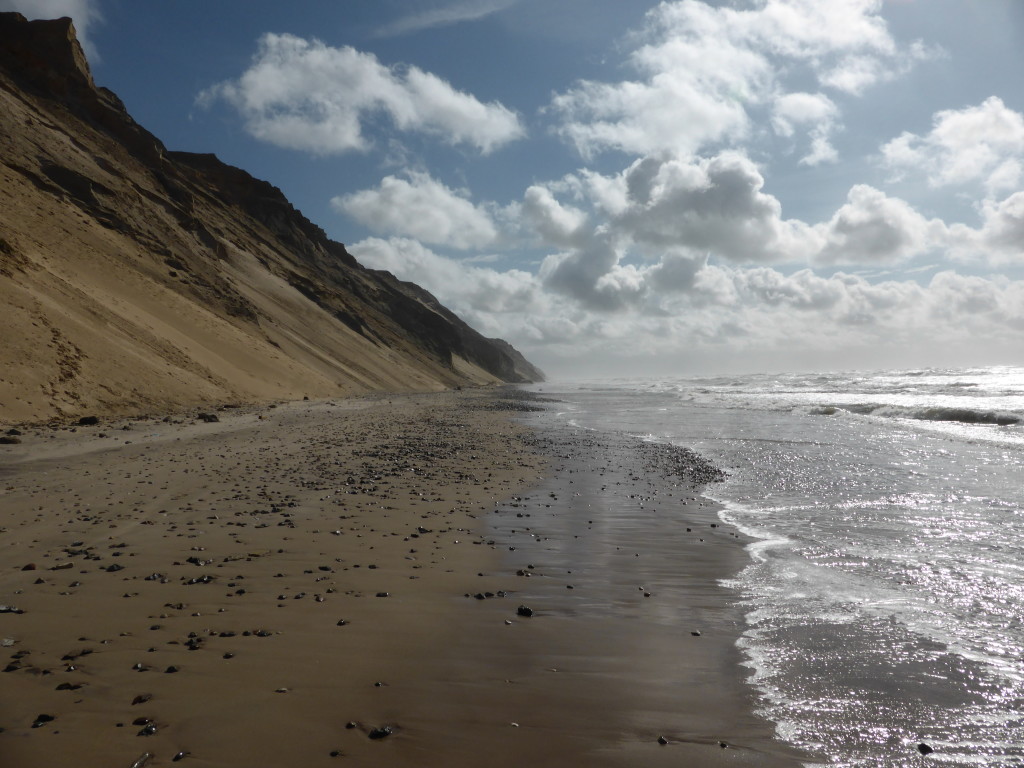Christian Brandes researcher and lecturer in the Institute of Geology at the University of Hannover, Germany. You can read about his recent Geology paper concerning glacially-induced intraplate seismicity in northern Central Europe here.
Northern Central Europe is regarded as a low-seismicity area, located far away from plate boundaries. Nevertheless, several earthquakes were reported in northern Central Europe over the last 1200 years. These reports were compiled in historic earthquake catalogues (Leydecker, 2011). Our current research focuses on the tectonic drivers of these young seismic events. In addition to the fact that distinct historic earthquakes occurred in northern Central Europe, we found field evidence in northern Germany pointing to strong earthquakes in the time period from 16 ka to 12 ka (Brandes & Winsemann, 2013). The seismic activity is indicated by faults and soft-sediment deformation structures such as sand volcanoes developed in unconsolidated sediments (Fig. 1).
The seismic activity took place in the time shortly after the last glacial maximum (LGM), when the decay of the Scandinavian ice sheet was already in progress. A link between deglaciation after the Weichselian glaciation and the earthquakes is therefore very likely. It is well known that the ice melting caused an unloading of the lithosphere leading to a process called postglacial rebound that makes Scandinavia still rise today (Steffen and Wu, 2011). Because of this rebound spectacular cliffs are developed e.g. at the North Sea coast of Scandinavia (Fig. 2). With numerical simulations we are able to show that the unloading of the lithosphere leads to stress changes that are large enough to trigger earthquakes. Though our study area in northern Germany is located outside the former glaciated area, our simulations show that the seismicity between 16 to 12 ka is very likely a consequence of this unloading effect (Brandes et al., 2012). The earthquakes caused a stress relief and thus low seismicity. However, due to the ongoing rebound enough stress accumulated over several thousands of years to cause earthquakes e.g. in mediaeval times in the same area. Supported by our numerical simulations, we think that the historic seismicity in northern Central Europe is the result of this new stress increase caused by the ongoing rebound (Brandes et al., 2015).
References
Brandes, C., Steffen, H., Steffen, R. & Wu, P. (2015): Intraplate seismicity in northern Central Europe is induced by the last glaciation. Geology, 43, 611-614.
Brandes, C., Winsemann, J., Roskosch, J, Meinsen, J., Tanner, D.C., Frechen, M., Steffen, H. & Wu, P. (2012): Activity of the Osning thrust during the Lateglacial: ice-sheet and lithosphere interactions. Quaternary Science Reviews, 38, 49-62.
Brandes, C. & Winsemann, J. (2013): Soft sediment deformation structures in NW Germany caused by Late Pleistocene seismicity. International Journal of Earth Sciences, 102, 2239-2254.
Leydecker, G. (2011): Erdbebenkatalog für die Bundesrepublik Deutschland mit Randgebieten für die Jahre 800-2008. Geologisches Jahrbuch Reihe E, 198 pp.
Steffen, H. & Wu, P. (2011): Glacial isostatic adjustment in Fennoscandia – a review of data and modeling. Journal of Geodynamics, 52, 169-204.
![]() This work is licensed under a Creative Commons Attribution-NonCommercial-ShareAlike 4.0 International License.
This work is licensed under a Creative Commons Attribution-NonCommercial-ShareAlike 4.0 International License.


